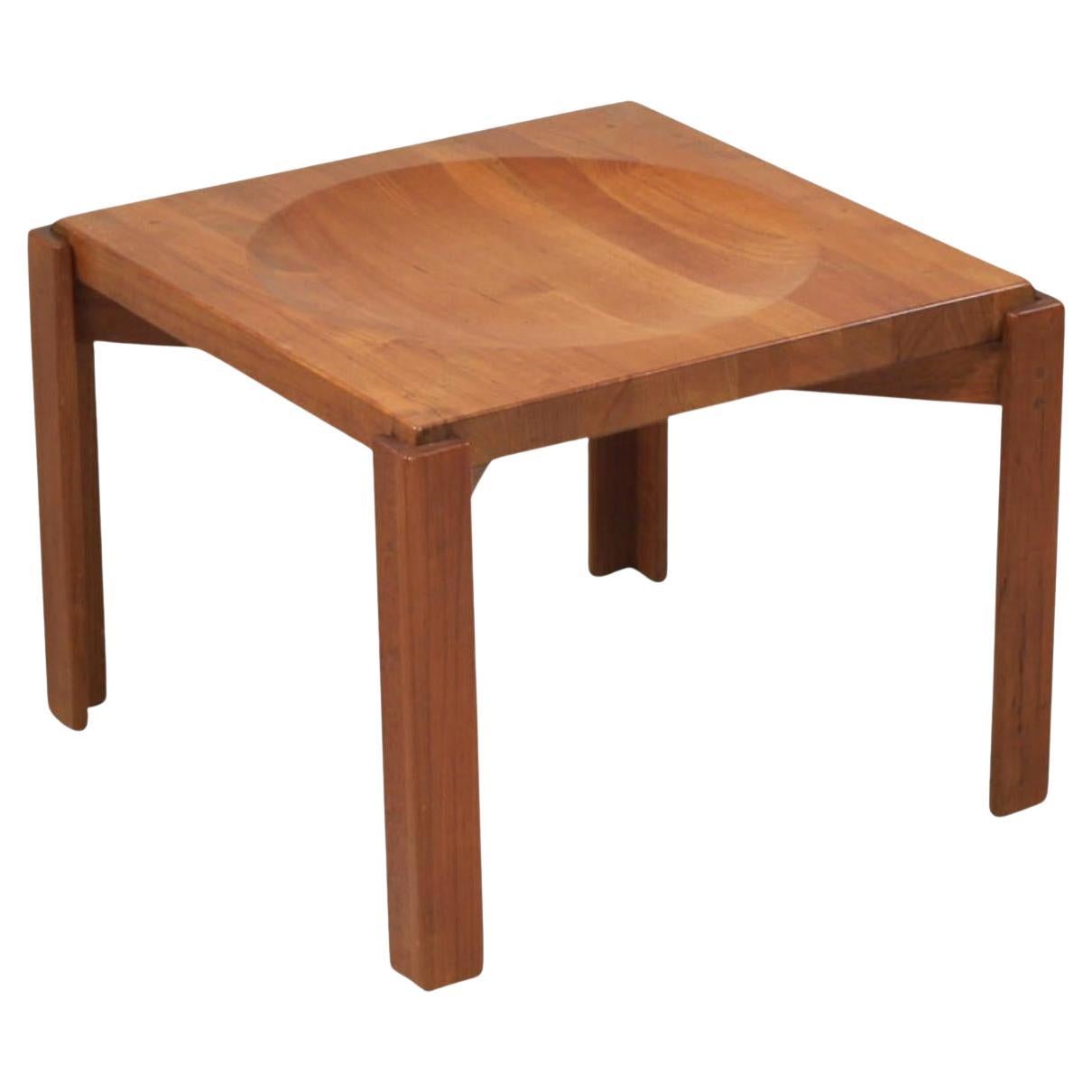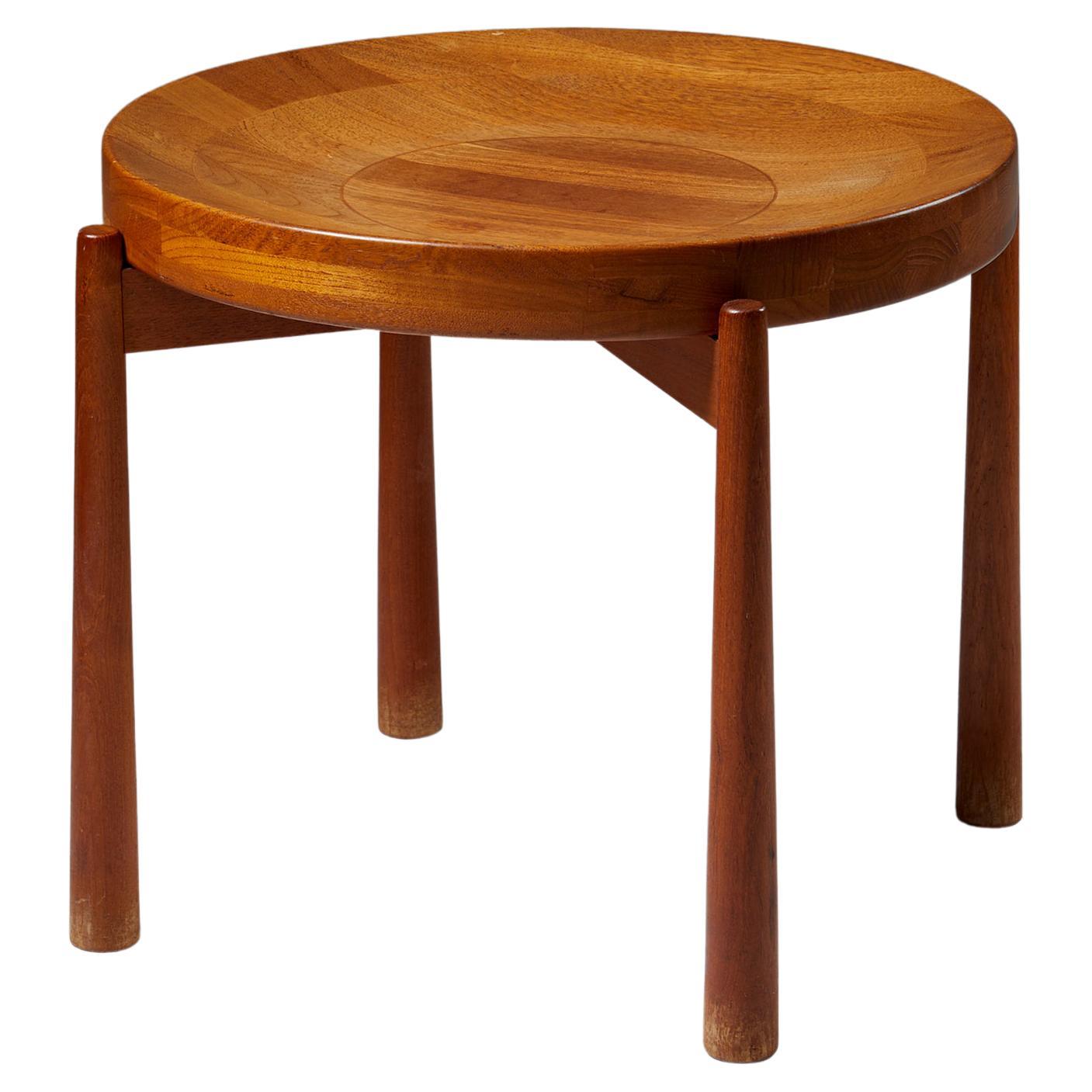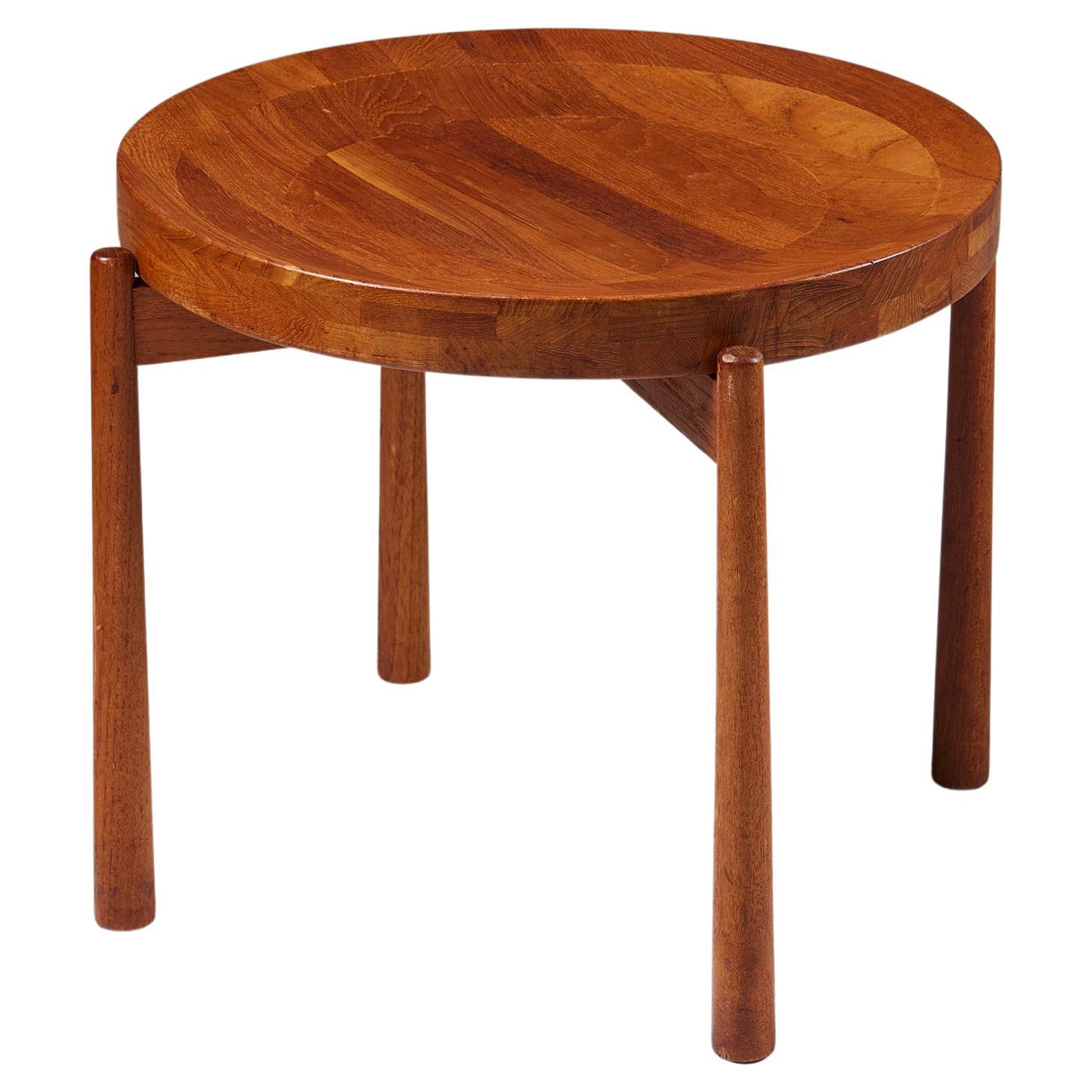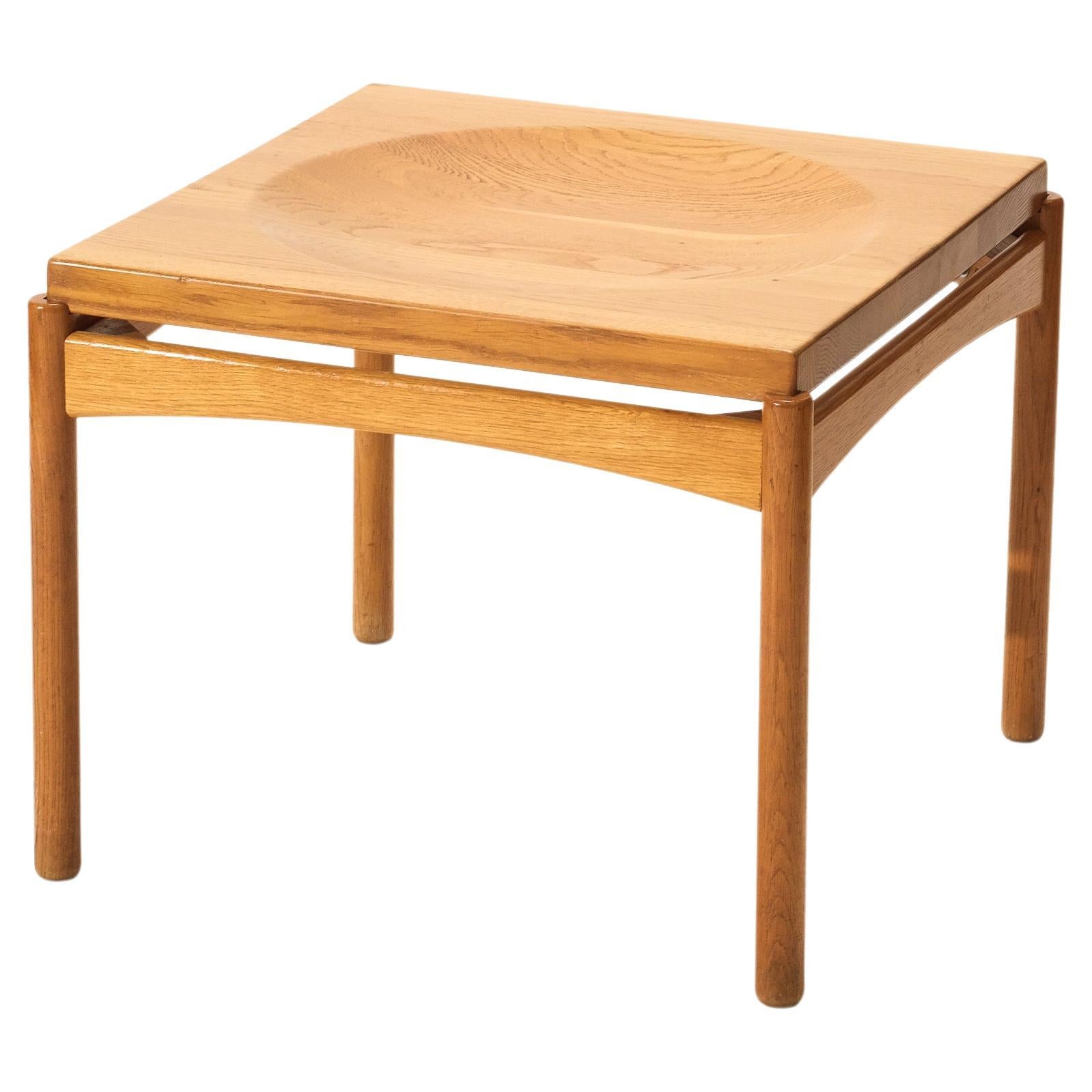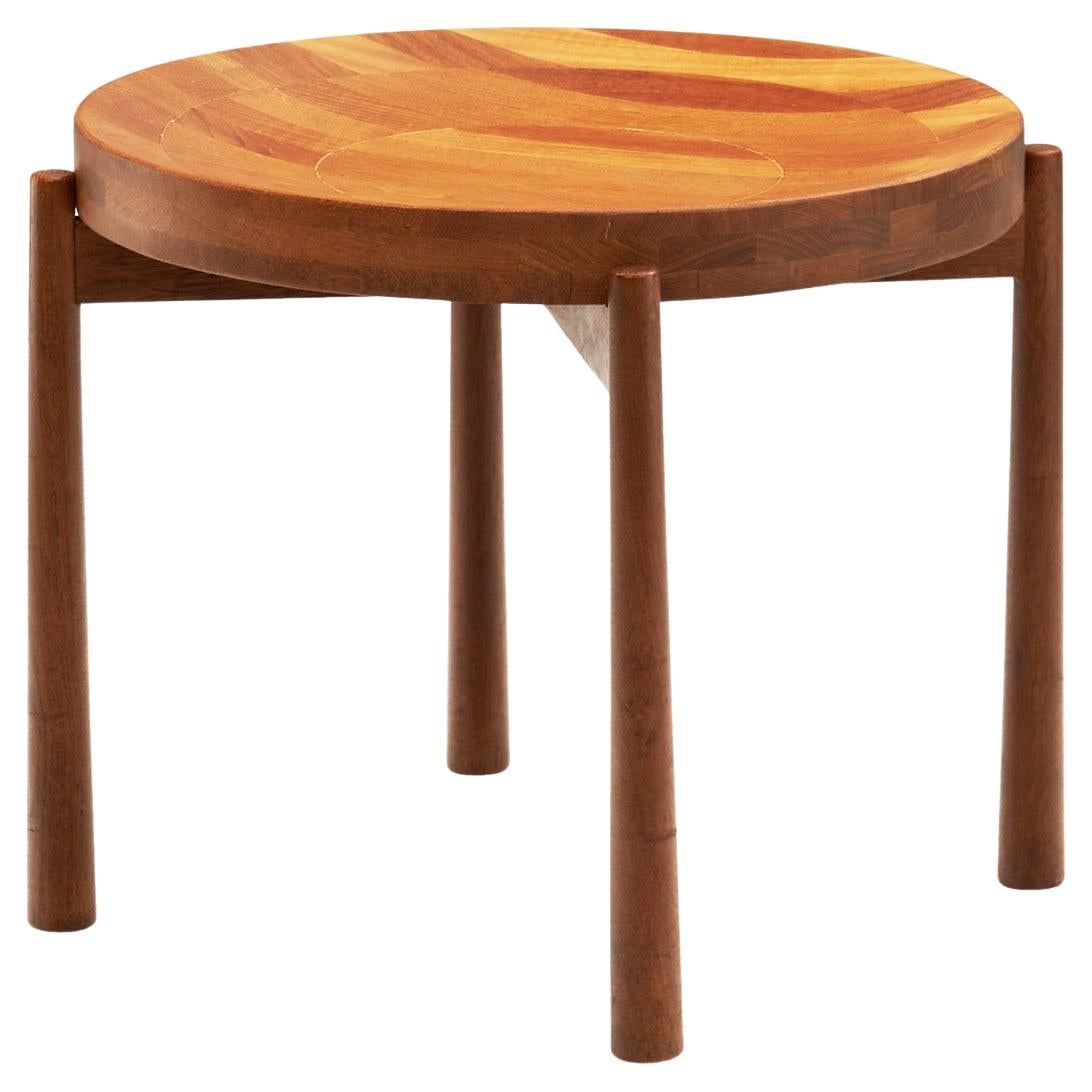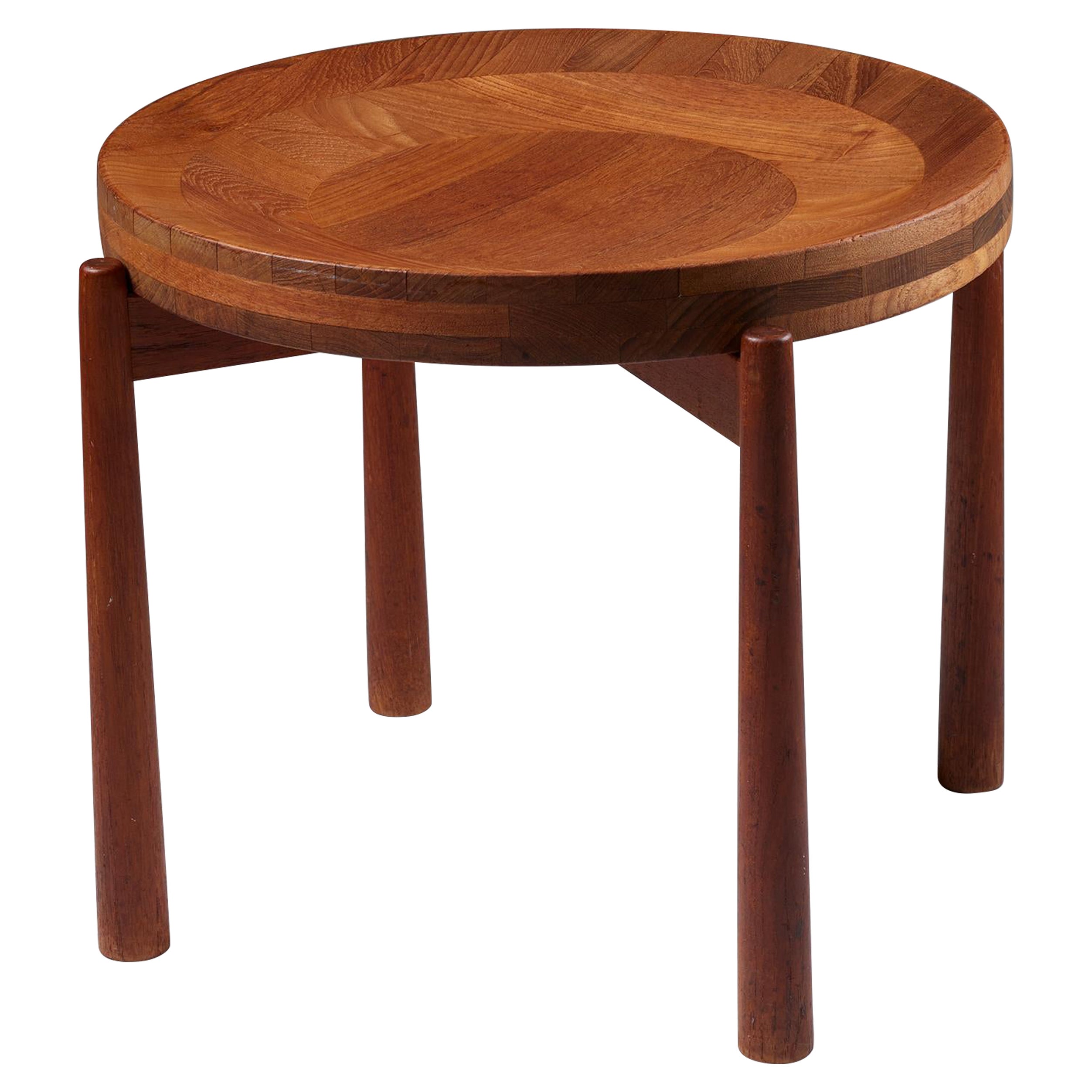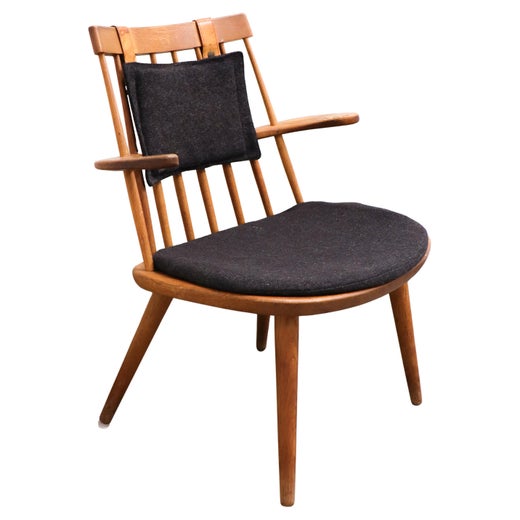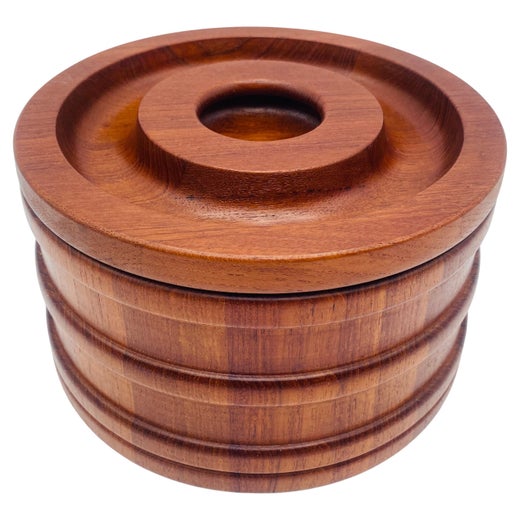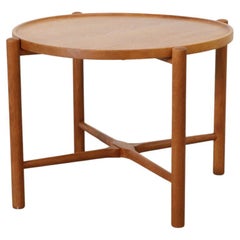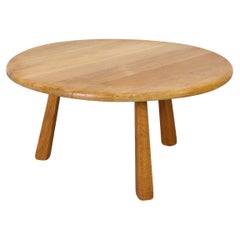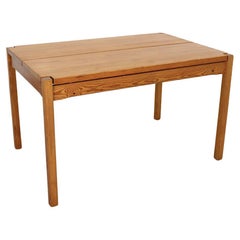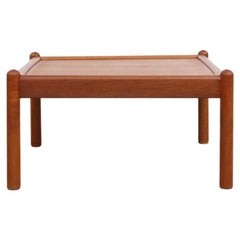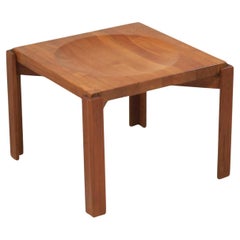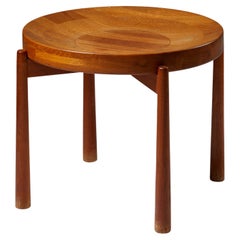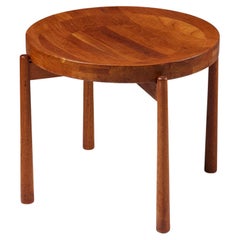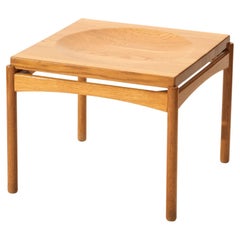Yngve Ekström for Dansk Oak Reversible 'Catch All' Table, Denmark 1960s
About the Item
- Creator:Yngve Ekström (Designer),Dansk (Manufacturer)
- Dimensions:Height: 18.25 in (46.36 cm)Width: 25 in (63.5 cm)Depth: 25 in (63.5 cm)
- Style:Mid-Century Modern (Of the Period)
- Materials and Techniques:
- Place of Origin:
- Period:
- Date of Manufacture:1960s
- Condition:Wear consistent with age and use. Minor losses. Minor fading. Original vintage condition. Visible wear consistent with age and use, including discoloration to the oak, light surface scratching, and minor dents. All commensurate with its age and history, contributing to its authentic patina.
- Seller Location:Los Angeles, CA
- Reference Number:Seller: T450 RF1stDibs: LU922445302962
Yngve Ekström
Vintage Yngve Ekström furniture embodies the beauty and simplicity of the Scandinavian modern style. The Swedish designer, architect and woodworker created clean-lined hardwood pieces with sophisticated details and flourishes. He was known for his comfortable lounge chair designs as well as chic cocktail tables and handsome highboard cabinets.
Ekström was born in 1913 in Småland, home to Sweden’s oldest furniture factory, Hagafors Stolfabrik. After his father died, he began working at the factory. In 1945, Ekström and his older brother, Jerker Ekström, opened ESE Möbler, a furniture company headquartered in their hometown. In 1952, they received acclaim for their innovative Thema chair. The laminated veneer chair was packed flat for easy shipping so customers could assemble it at home. Ekström followed it with the 1955 Arka chair for the furniture manufacturer Stolab. A spindle backrest and spacious curved seat gave the chair comfort and style.
Ekström’s most popular design was the 1956 Lamino chair. Still in production, the minimalist wooden-frame chair features a sinuous and inviting profile with a high backrest. Looking back at his well-loved design, Ekström said: “To have designed one good chair might not be a bad life’s work.”
After Ekström’s brother left the company, he changed the name to Swedese. Ekström sold Swedese in 1974, but continued to design for it until he died in 1988. His furniture is in museum collections around the world, including the National Museum in Stockholm, the Stedelijk Museum in Amsterdam and the Victoria & Albert museum in London. In 1999, Swedish design magazine Sköna Hems named the Lamino chair the “20th-Century’s Best Swedish Furniture Design.”
Swedese, which still occupies its original building in Småland, partnered with artist Kustaa Saksi in 2017 to update the iconic Lamino chair.
On 1stDibs, find vintage Yngve Ekström seating, tables, storage cabinets and more.
Dansk
Ironically, Dansk Designs, the tableware company practically synonymous with Danish design (“Dansk,” in fact, translates to “Danish”), was the brainchild of an American couple, Ted and Martha Nierenberg.
The Nierenbergs, who founded the business in 1954, initially worked out of the garage of their Great Neck, Long Island, home and marketed their serveware, tables, decorative objects and other products largely in the United States. But they had a secret weapon: Jens Quistgaard.
After demonstrating artistic talent at a young age, the Copenhagen native was gifted a forge and anvil so that he could work in his mother’s kitchen. Quistgaard built toys, jewelry and hunting knives under his father’s tutelage. Later, he spent years learning from local artisans how to produce wood, metal, ceramic and glass models. Quistgaard’s career path solidified during his apprenticeship as a silversmith with legendary Danish silver firm Georg Jensen.
The Nierenbergs discovered the sculptor and designer on their honeymoon, which they’d spent traveling through Europe searching for top-quality goods that might form the basis of a business.
After they hired Quistgaard and launched Dansk, their products swiftly came to epitomize the best of accessible Scandinavian design for mid-century American consumers, who fell for the firm’s staved-teak salad bowls, colorful casseroles and stainless-steel flatware, all of which managed to look handmade despite being mass-produced.
The long-distance relationship flourished for 30 years, during which millions of Quistgaard pieces were manufactured in the company's factories.
The designs for Quistgaard’s Købenstyle line and other collections during the mid-1950s were revolutionary, with bowls built like barrels and charming, lightweight monochrome tableware in enameled steel. Quistgaard’s work married function with striking, sophisticated form. He utilized exceptional materials in the creation of his coveted cookware, barware and serving pieces, opting for warm teak and exotic woods and reintroducing steel as a go-to option for kitchen wares.
Quistgaard’s postwar-era Scandinavian modernist work is still exceedingly popular in living rooms, dining rooms and kitchens in the United States, Europe and Japan, particularly in the homes of mid-century design enthusiasts.
Find vintage Dansk Designs furniture and decorative objects on 1stDibs.
- ShippingRetrieving quote...Shipping from: Los Angeles, CA
- Return Policy
More From This Seller
View AllVintage 1960s Danish Mid-Century Modern Side Tables
Oak
Mid-20th Century Dutch Mid-Century Modern Coffee and Cocktail Tables
Oak
Mid-20th Century Finnish Mid-Century Modern Dining Room Tables
Pine
Vintage 1970s Dutch Mid-Century Modern Coffee and Cocktail Tables
Teak
Vintage 1960s Dutch Mid-Century Modern Coffee and Cocktail Tables
Formica, Teak
Early 2000s Danish Modern Dining Room Tables
Wood, Bentwood
You May Also Like
Vintage 1960s Danish Scandinavian Modern Side Tables
Teak
Mid-20th Century Swedish Mid-Century Modern Tray Tables
Teak
Mid-20th Century Danish Mid-Century Modern Side Tables
Teak
Vintage 1960s Swedish Scandinavian Modern Coffee and Cocktail Tables
Oak
Vintage 1960s Danish Mid-Century Modern Tray Tables
Teak
Vintage 1950s Danish Mid-Century Modern Side Tables
Teak
